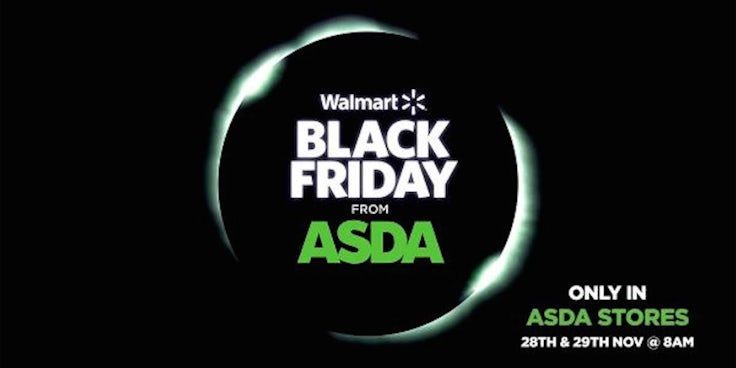The winners of the Christmas ad battle
Retail brands are putting increasing creative effort into their Christmas marketing campaign. The stakes are high. Consumers were expected to spend £74bn in the six weeks running up to Christmas and retailers want as big a slice of that spend as possible.

The success of a marketing campaign can be judged on many things – engagement, interest and most importantly impact on sales. So which retail marketers had the best Christmas?
John Lewis on top
In a closely fought race it is John Lewis that has come out on top in 2014 as success in ad engagement and sentiment was backed up by a festive sales boost.
According to communications agency Waggener Edstrom’s Brand Agility Index, which measures a range of metrics including engagement, originality, differentiation and relevance, John Lewis’ campaign about a boy and his friendship with a penguin scored an average of 49 points over the five weeks of Christmas.
https://www.youtube.com/watch?v=iccscUFY860
Its success in the final weeks was boosted by its “business impact” score, a measure of its sales, of 5 – the highest possible rating. John Lewis saw sales increase by 6% to £777m over the festive period.
John Lewis was also the only retailer to score consistently highly across all parameters every week, highlighting the work the brand did across social media and stores to maintain the initial hype and turn it into longer term engagement.
Figures from We Are Social show John Lewis had a 71% share of voice on social media, well ahead of its nearest rival Sainsbury’s on 13% and Marks & Spencer’s with 10%.
Waggener Edstrom says: “Via dedicated Twitter accounts for both Monty and Mable and by scaling across online and in-store, John Lewis was able to continuously engage with other non-campaign news and content and respond to customers with speed as either Monty and Mable.
“The quirkiness of this approach allowed John Lewis to maintain high sentiment and engagement scores.”
Marks and Spencer’s came a close second in Waggener Edstom’s rankings with a score of 45, boosted by engagement with its Two Fairies characters on Twitter allowing it to score highly across originality and sentiment. However, its campaign lacked the scale of rivals’, with M&S gaining less traction on sites such as YouTube and Facebook.
It also struggled in terms of business impact. Food sales were up but sales at its general merchandise business, which includes the key womenswear division, fell for the 14th consecutive quarter.
The campaign was part of a wider push by M&S to align its food and GM marketing with the hope of creating a halo effect across the business. That doesn’t appear to be happening yet, with M&S chief executive Marc Bolland telling Marketing Week last week that while “brand appreciation” is improving there will be a “lag” before that transfers to sales.
How the supermarkets fared
At the supermarkets, Sainsbury’s and Waitrose came out on top of Waggener Edstorm’s rankings with scores of 38 although for different reasons. Sainsbury’s started Christmas well with a campaign that scored highly for originality, differentiation and scale.
Figures from YouGov suggest that its campaign should have had a positive impact on sales, with 55% of people questioned at the start of December saying the ad made them more likely to shop with the retailer over Christmas. That beat Boots and M&S on 46% and John Lewis on 45%.
However it fizzled out as Sainsbury’s took what Waggener Edstrom calls an “overly cautious” approach to talking about the ad’s content after it faced negative backlash for using World War I imagery. It also lost out on business impact scores after posting a 1.8% per cent drop in sales, its first decline over Christmas in 10 years.
Waitrose on the other hand was boosted towards the end by a 2.8% rise in like-for-like sales, earning it the highest score for business impact. It also scored well for engagement and originality.
Lidl’s campaign was notable for being one of only three retailers to achieve a business impact score of five. A study by Millward Brown found that the highest proportion of people – 3.27 out of 5 – “agreed strongly” with the statement that the ad would make them more likely to buy from the grocer.
That put it ahead of John Lewis on 3.24 and Marks & Spencer’s on 3.16. Amanda Philips, Millward Brown’s head of marketing, put its success down to a simple message that helped shift perceptions of the brand.
Failing to measure up
Other retailers’ campaigns didn’t see the same results. By Waggener Edstrom’s metrics Tesco managed a score of just 30 – losing out in terms of differentiation and originality as well as business impact where it only scored 3. Its sales were down 0.3% over Christmas although that was an improvement on its quarterly figures which saw sales fall 2.6%.
Asda managed a score of 29 as it failed to keep up with rivals in areas including personalisation. Morrisons’ campaign was the worst performing of the major supermarkets with a score of 27, hit by a 3.1% drop in sales and a lack of originality.
A company’s Christmas performance is not all about its marketing. It is about the whole strategy – from execution in stores to delivery options and customer experience.
This year Black Friday also had a big impact, shifting sales forward rather than producing a halo effect across the rest of Christmas as retailers had hoped. Some, such as John Lewis and Very.co.uk, managed to weather the event and post increased sales.
However for other retailers including Argos and Dixons Carphone the level of promotional activity hit sales and profit margins.
For retailers that are already doing well and highly perceived by customers, a well thought through Christmas marketing campaign that works across platforms and is combined with great product and multichannel capabilities can help to boost sales. A good marketing campaign can’t, however, paper over cracks and issues in the wider business.







